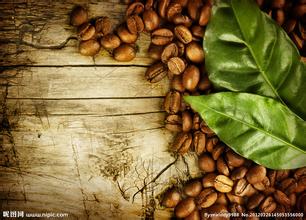Nepalese coffee is produced in the Agganzhi region of Golami, Nepal, by 37 villages, 90
Although Nepalese coffee came from Myanmar around 1940, the Arabica species used for commercial purposes came from southern India. Although Nepal does not belong to the coffee belt with the equator as the center and within the Tropic of Cancer, it can get sufficient water supply because of heavy fog in the morning and full light in the afternoon because of strong sunlight. Nutrients can be supplied from fertile soil and have a natural growing environment for cultivated coffee.
Supreme Mount Qomolangma, Nepal | Nepal Mt.Everest Supreme
Nepalese coffee is grown in 37 villages and more than 900 small-scale farms in the Agganzhi region of Golami, Nepal. With a temperature of 17 ∼ 27 degrees, the place has a subtropical climate with annual precipitation of 760mm ∼ 890mm, which is the rainy season from April to August. The main cultivation area of coffee is located at 1500m ∼ 2000m above sea level. The coffee is harvested from January to March. This coffee combines the aroma of nuts with the sweetness of chocolate. It is bitter and sweet.
Flavor characteristics: Aroma | Flavor | Acidity | Sweetness | Body | Aftertaste Roasting Point: Light | Cinamon | Medium | High | City | Fullcity | French | Italian Variety: Typica ProcessingMethod: Washed Species: Arabica Flavor: Nutty, Dark Chocolate, floralfragrance, jasmine, spicy aroma
Summary: landlocked countries located at the southern end of the central Himalayas
Capital: Katmandu (Katmandu)
Language: Nepali
Climate: monsoon, subtropical climate
Religion: 81% of Hinduism, 11% of Buddhism, 4% of Islam
Population: about 29.52 million (2008)
Production area: Syanja, Gulmi, Chitwan
Production varieties: Typica, Bourbon, Pacamaras, Pacas, Caturra, Cataui, Kenya Rui Rue11
Harvest time: November ∼ March
Planting height: 1000m ∼ 1500m
Grade: S.H.B
Processing method: Wet-processed
Features: Nutty, DarkChocolate, low-acidity, medium-body, harsh, jasmine, spicy aroma

Important Notice :
前街咖啡 FrontStreet Coffee has moved to new addredd:
FrontStreet Coffee Address: 315,Donghua East Road,GuangZhou
Tel:020 38364473
- Prev

The introduction of death wish coffee beans the taste of death wish coffee beans
1. Death wish coffee is made from Arabica coffee beans, which itself does not contain too much caffeine, but through the special roasting method used, the caffeine in the coffee beans is preserved to the maximum extent. 2. The packaging of death wish also has the smell of death. The black bag has a skull printed on it. No.
- Next

Mocha matari is produced in the northern part of Yemen and has a strong sour taste.
Although Yemen is located in the Middle East with the Arabian Peninsula, it can actually be said that it is almost closely connected to the African continent located opposite the Red Sea. This geographical contiguity is also illustrated by the way Ethiopian coffee travels through Yemen. Ethiopian coffee processed naturally is still known as mocha. As for coffee exports, due to the complexity of the circulation process,
Related
- Does Rose Summer choose Blue, Green or Red? Detailed explanation of Rose Summer Coffee plots and Classification in Panamanian Jade Manor
- What is the difference between the origin, producing area, processing plant, cooperative and manor of coffee beans?
- How fine does the espresso powder fit? how to grind the espresso?
- Sca coffee roasting degree color card coffee roasting degree 8 roasting color values what do you mean?
- The practice of lattes: how to make lattes at home
- Introduction to Indonesian Fine Coffee beans-- Java Coffee producing area of Indonesian Arabica Coffee
- How much will the flavor of light and medium roasted rose summer be expressed? What baking level is rose summer suitable for?
- Introduction to the characteristics of washing, sun-drying or wet-planing coffee commonly used in Mantenin, Indonesia
- Price characteristics of Arabica Coffee Bean Starbucks introduction to Manning Coffee Bean Taste producing area Variety Manor
- What is the authentic Yega flavor? What are the flavor characteristics of the really excellent Yejasuffi coffee beans?

